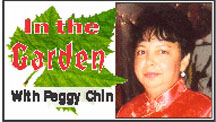Codiaeum commonly called crotons belong to the Euphorbiaceae family, which has its origins in Asia: mainly Malaysia, Indonesia, India and Sri Lanka. There are approximately 750 different types of crotons, and they have adapted well to the warm, humid conditions in the Caribbean, Florida and Africa.
The attraction of crotons is obvious: they have highly ornamental and variegated leaves
Crotons look great in any garden, either in a pot or planted directly in the earth, but if in the latter, it must be well-drained soil. In some Caribbean islands, particularly Barbados, crotons are planted as a hedge fence.
This tropical shrub looks best when kept bushy, so pinch the young centre leaves regularly to encourage bushing. They can reach a height of around six feet, but if when they grow tall the lower leaves start to drop, cut them down a bit.
Crotons can be grown from stem cuttings. Feed with Miracle Gro All Purpose Plant Food or Blue Granules once per month and try misting croton leaves once per week.
Until next week, happy gardening.




